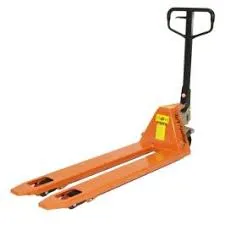


Types of Fall Protection Ensuring Safety at Heights
Fall protection is a crucial aspect of workplace safety, particularly in industries where workers are required to operate at heights. Falls can lead to severe injuries or fatalities, making it essential to implement proper fall protection systems and practices. This article explores the various types of fall protection systems available, their purposes, and their importance in safeguarding workers across different environments.
1. Guardrail Systems
Guardrails are one of the most common types of fall protection. They are physical barriers installed along the edges of elevated surfaces, such as roofs, balconies, and work platforms. Guardrails are designed to prevent workers from falling over the edge. Typically, they consist of a top rail, mid-rail, and toe board. The top rail must be capable of withstanding a specific amount of force, providing a sturdy barrier. Guardrail systems are effective for many applications and do not require any personal fall protection equipment, making them a widely used option.
2. Personal Fall Arrest Systems (PFAS)
Personal Fall Arrest Systems are designed to be used by individual workers and consist of several components a full-body harness, a lanyard, a deceleration device, and an anchorage point. When used properly, PFAS can stop a person from falling to the ground and minimize injury. The full-body harness distributes the force of a fall across the body, while the lanyard connects the worker to a secure anchorage point. It’s crucial for these systems to be inspected regularly to ensure they function effectively.
3. Safety Nets
Safety nets are used in situations where fall protection is necessary but guardrails or PFAS are impractical. Common in construction sites and large-scale projects, safety nets are installed below the work area to catch any falling workers or tools. These nets absorb the fall impact and reduce the risk of serious injury. Proper installation and regular inspections of safety nets are essential to ensure their effectiveness.

4. Positioning Device Systems
Positioning device systems are meant to hold a worker in place while allowing them to work hands-free. These systems use a harness and a lanyard connected to an anchorage point, ensuring that workers can remain in position without the risk of falling. Often used in tasks such as window cleaning or maintenance, positioning devices allow workers to carry out their duties effectively while still safeguarding them against falls.
5. Rescue Plans
While not a fall protection system per se, having a well-structured rescue plan is vital when working at heights. In the event of a fall, quick rescue operations can be the difference between minor injuries and serious harm or fatalities. Employers must establish a comprehensive rescue plan that includes training workers on how to respond in case someone falls. This plan should detail the rescue equipment needed, the personnel responsible for carrying out rescues, and protocols for communication and emergency response.
6. Training and Awareness
Regardless of the type of fall protection systems in place, comprehensive training is imperative. Workers must understand the specific fall hazards present in their work environment, the proper use of fall protection equipment, and the safety measures that can be taken to prevent falls. Regular training sessions will keep safety awareness at the forefront and ensure that everyone knows how to respond effectively in an emergency.
Conclusion
With falls being one of the leading causes of workplace injuries and fatalities, the importance of fall protection cannot be overstated. Each type of fall protection system has its advantages and applications, and selecting the appropriate one depends on the specific work environment and tasks performed. Employers must prioritize the safety of their workers by implementing effective fall protection designs, providing thorough training, and ensuring that rescue plans are in place. By fostering a culture of safety, organizations can significantly reduce the risks associated with working at heights and protect their most valuable assets – their employees.



